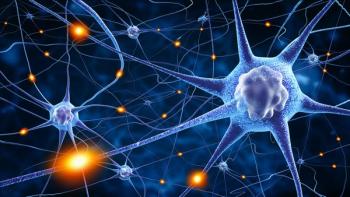
Lentiviral Gene Therapy Stabilizes Patients With MPS1H
Follow-up data up to 3 years showed supraphysiologic levels of blood IDUA and decrease of GAGs.
Patients with mucopolysaccharidosis type 1 Hurler (MPS1H) syndrome treated with α-Liduronidase (IDUA)-encoding lentiviral-transduced
These new data, from a phase 1/2 trial (NCT03488394), were presented at
“MPS1H is a rare lysosomal storage disorder caused by a defect in the IDUA gene leading to glycosaminoglycans (GAGs) accumulation in multiple organs and tissues, particularly in the skeleton and central nervous system (CNS),” Tucci and colleagues wrote.“Allogeneic hematopoietic stem cell transplantation +/- pre-/peritransplant enzyme replacement therapy represents the standard treatment, but skeletal and neurocognitive manifestations still progress over time.”
The updated data are from 6 male and 2 female patients that lacked a non-heterozygous-HLA-matched donor and displayed IQ/DQ>70. The patients had a median age of 22 months (range, 14-34) at the time of treatment. Five participants that were positive for anti-IDUA antibodies before gene therapy cleared them within 3 months after infusion and remained negative at the last follow-up.
READ MORE:
The study was primarily evaluating blood IDUA up to supraphysiologic levels at 1 year and 3 years post gene therapy infusion. Secondary and exploratory outcomes were assessing clearance of GAGs in urine and cerebrospinal fluid (CSF), radiological parameters (X-rays and MRI for the hip and the spine), and skeletal and motor development as assessed by clinical and functional scales. These scales were growth and measures of thoracolumbar kyphosis for skeletal outcomes and Peabody motor scale and joint range of motion(ROM) for functional outcomes. Hip dysplasia (HD) was evaluated in 14 hips of 7 patients, excluding 1 that had bilateral hip dislocation already present before gene therapy.
The 7 evaluable participants at 3 years had sustained engraftment of gene-corrected cells with a median 1.17 vector count number per genome (range, 0.13-3.85) in peripheral blood mononuclear cells and persistent supraphysiologic blood IDUA activity (median, 133.4 µmol/L/h; range, 38.9-151.6), above the 97.5th percentile of age-matched healthy children. These patients also had urinary GAG levels at normal or near normal levels at 3 years post-infusion. In all patients, the gene therapy was well-tolerated and CSF IDUA activity was detectable at 3 months and remained stable over time while GAGs decreased up to 3 years after infusion in 6 evaluable patients.
Investigators found that, after adjusting for age and gender, patients showed growth within the normal range of healthy children and reduction or stability in clinical measures of sitting and standing kyphosis. Participants also exhibited progressive motor skill acquisition, with the best outcomes in shoulder mobility among ROM examined. HD progressed in 1 of 14 hips assessed and spine MRI revealed stability in typical MPS1H features at latest follow-up.
“These data show extensive metabolic correction and initial clinical response after GT and a favorable safety profile, highlighting its therapeutic potential for MPSIH treatment. A longer follow-up is needed to draw definitive conclusions on the impact of GT on MPSIH manifestations in the long term,” Tucci and colleagues concluded.
REFERENCE
Tucci F, Consiglieri G, Filisetti C, et al. Interim analysis of first in human phase 1-2 clinical trial of ex-vivo gene therapy for Hurler syndrome: An update at 3 year follow-up. Presented at: EHA 2023 Congress; June 8-11; Frankfurt, Germany. Abstract #P1392
Newsletter
Stay at the forefront of cutting-edge science with CGT—your direct line to expert insights, breakthrough data, and real-time coverage of the latest advancements in cell and gene therapy.












































